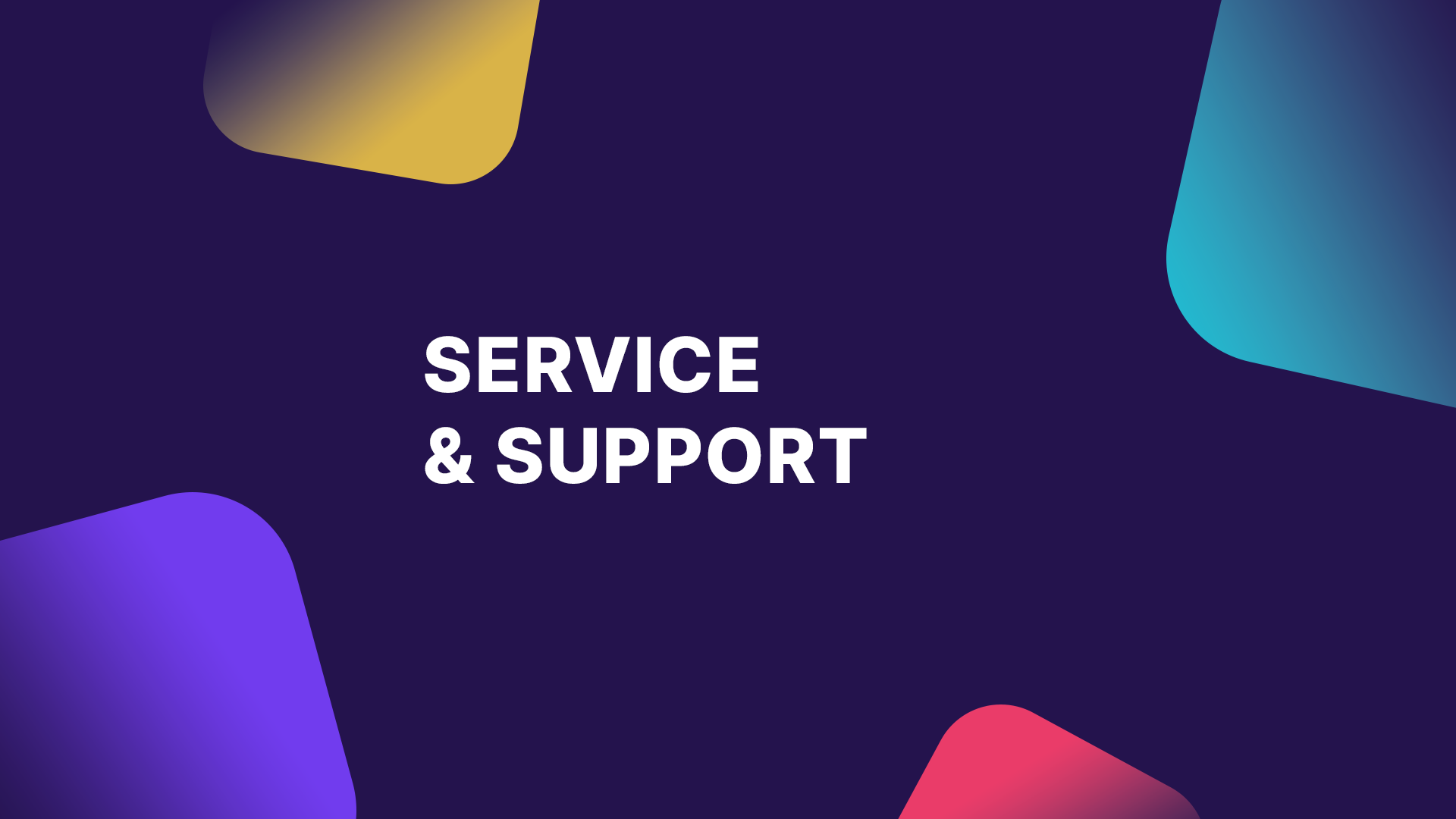The role of internal communication in the modern corporate landscape cannot be overestimated. It is the glue that connects employees, regardless of whether they work in the office or across the globe. Strong internal communication promotes commitment, increases satisfaction and can increase employee loyalty. With teams increasingly working remotely and expecting flexibility, employee apps are essential to maintain cohesion and corporate culture.
Employee apps are therefore no longer just a nice extra, but a decisive factor for the success of a company. These apps are specially developed software tools that aim to improve employee communication, collaboration and productivity. They enable teams to exchange information in real time, facilitate access to important resources and automate key business processes. With functions ranging from simple messaging platforms to complex project management tools, they are the backbone of an efficient internal communication strategy.
With this blog post, we would like to create a deeper understanding of the economic justification for employee apps. We want to show the importance of these apps for strengthening internal communication channels. We also analyse their direct contribution to the company’s success. The focus here is on measurable results that manifest themselves in a positive ROI. We will analyse how the benefits of these tools can be quantified. We also shed light on how effective use of these apps makes them indispensable. They are becoming a central element of every modern corporate strategy.
Investment in an employee app
Investing in an employee app is a smart decision for forward-looking companies that are interested in a sustainable increase in ROI. Initial investments lay the foundation for success and include the initial expenses for the design, development and technical implementation of the app. These development and implementation costs are variable and depend on the complexity of the app and the specific requirements of the company.
But the costs don’t end once the app has been launched. To ensure an optimal ROI from the employee app, companies must also invest in the education of their workforce. The costs for training and support are crucial to promote user acceptance and guarantee the effective use of the app. These investments help to smooth the learning curve and enable employees to use the app to their and the company’s advantage.
Licence and maintenance costs are another significant cost item that influences the ROI of an employee app. These recurring costs ensure that the app is always up to date and that technical problems can be resolved quickly, guaranteeing business continuity. The running costs and operating costs should not be underestimated either. They include the costs of hosting the app, data traffic, storage space and security updates. These aspects play an important role in the long-term scalability and security of the app, and therefore in the long-term ROI of the employee app.
Ultimately, the key to achieving a high ROI from the employee app is thorough planning and continuous evaluation of app usage and performance. This enables companies to ensure that their investment in an employee app brings measurable benefits for the organisation and its employees.
Improving internal communication through employee apps
Employee apps create a direct flow of information and thus enable communication in real time. This is particularly important in order to be able to react quickly to market developments. This means that employees are always up to date. They also eliminate the delays that often occur with traditional communication channels such as email. As a result, they make a significant contribution to more efficient operational management.
Supporting remote working and geographically distributed teams through employee apps is another factor that can have a positive impact on ROI. Where flexible working models are increasingly becoming the norm, these tools enable employees to remain productive regardless of their location. They help to ensure that all team members can work together seamlessly and share important information and resources without spatial restrictions.
Another significant advantage is the possibility of integration into existing company systems and the associated automation of processes. Employee apps that can be integrated into systems such as CRM, ERP or project management tools create standardised platforms that reduce data silos and automate repetitive tasks. This integration leads to a reduction in errors, saves time and promotes data-driven decisions.
The ROI of an employee app is largely determined by its ability to strengthen internal communication, facilitate remote working and complement existing systems. By realising these benefits, companies can improve their operational efficiency and gain a true competitive advantage.
Quantifying the benefits of an employee app
First and foremost, increasing productivity plays a major role. Efficient communication reduces the time spent on day-to-day tasks, freeing up resources for strategic projects. A key metric here is the measurement of time savings. The use of employee apps can save valuable working time, which has a direct impact on efficiency and ultimately on costs.
Another quantifiable benefit is the reduction in communication errors. Employee apps can reduce misunderstandings and ensure clearer and more targeted communication. Fewer errors mean less time spent on corrections and higher quality work results.
Not to be underestimated is also the increase in employee engagement that is promoted by employee apps. Committed employees are more motivated, more productive and contribute to a positive working atmosphere. This commitment also has an impact on employee satisfaction and loyalty. Satisfied employees are less inclined to leave the company, which in turn leads to a reduction in the staff turnover rate. Lower staff turnover means that fewer resources need to be channelled into recruiting and training new employees.

Employee communication needs to be better approached. Learn how this can be done quickly and effectively via an employee app.
Overall, it can be said that the ROI of an employee app is influenced by these various factors. By specifically analysing and improving these areas, companies can fully exploit the benefits of their employee apps and thus not only increase the quality of work, but also realise significant financial benefits.
Calculation of the ROI
Determining the exact ROI of an employee app requires a careful examination of all associated investments and the resulting returns. The underlying formula is relatively simple: the ROI is calculated by dividing the net return on the investment (i.e. the revenue minus the costs of the employee app) by the original costs and multiplying the result by 100. This formula provides a percentage that indicates how much profit (or loss) each unit of money invested has generated.

The methodology for calculating the ROI of the employee app takes into account both direct financial benefits and indirect benefits, such as increased employee productivity and improved morale, which can ultimately impact financial results. This can make the calculation more complex, as you also have to try to quantify qualitative benefits.
When analysing and interpreting ROI, it is crucial to consider the context. A high ROI indicates that the employee app has a significant positive impact on company performance. However, it should be noted that not all effects are immediately visible. Some benefits, such as improved corporate culture or employee satisfaction, may only realise their financial benefits over a longer period of time.
For example, the introduction of an employee app could improve internal communication so that team members spend less time searching for information. If each person in the company saves just 15 minutes a day, this could lead to a significant increase in overall productivity in a large company with several hundred employees. By converting this time saving into the hourly wage of employees, an estimate of the financial benefit can be obtained, which is used to calculate the ROI of the employee app.
A sample calculation can illustrate the ROI of an employee app in a practical way. In many companies, long and often inefficient meetings represent a significant challenge. A well-designed employee app can make a decisive difference here by streamlining communication processes and thus reducing the need for constant meetings. By implementing such an app, information can be shared quickly and transparently via a central platform, which speeds up decision-making and simplifies collaboration. The direct result is a considerable reduction in the time spent on meetings, which in turn leads to significant cost savings.
In our specific case, using the employee app reduced the time spent in meetings by 30%. Assuming an average hourly rate of 22.89 euros and originally 1,000 hours spent on meetings, this results in a saving of 6,867 euros. Together with an additional turnover of 40,000 euros and savings of 10,000 euros due to lower staff turnover, the total financial benefits amount to 56,867 euros. After deducting the investment costs of EUR 25,000, the ROI is approximately 127.47%, which means that for every euro invested, more than EUR 1.27 is returned: ROI = [(EUR 56,867 – EUR 25,000) / EUR 25,000] x 100 = 127.47%
This calculation shows that the company received EUR 1.27 back for every euro invested in the employee app, which represents a very positive ROI. This underlines the financial effectiveness of the app and confirms that the investment was a wise decision. The calculated ROI of the employee app not only serves the company as proof of success, but also as a reference point for future investment decisions in similar technologies.
However, it is important to emphasise that the cost of using the app typically decreases in subsequent years. This is because the one-off implementation costs are non-recurring, while the savings and additional revenue may continue or even increase as employees use the app more efficiently and the business is further optimised. As a result, the ROI can be expected to increase further in the following years, making the initial investment even more valuable. This makes it clear that the introduction of an employee app not only offers short-term financial benefits, but also represents a long-term investment in the efficiency and productivity of a company.
The categorisation of SaaS models in the calculation of ROI
Calculating the ROI of an employee app becomes particularly interesting when we consider the dynamic benefits of a SaaS solution such as Polario from plazz AG. SaaS models, such as those offered by Polario, score points for cost efficiency by replacing the high initial investment in hardware and software with a flexible subscription model characterised by lower and predictable running costs. This alone can have a significant impact on ROI.
In addition, plazz AG assumes responsibility for maintenance and updates for Polario. This reduces the burden on IT departments and enables companies to always work with the latest software version, which increases security and efficiency. Scalability is another key benefit that enables the app to be quickly adapted to changing business requirements.

Planning & Realization We accompany you during the planning and realization of your project. Learn more about the process and the individual steps of the platform. From conception and planning, to realization, evaluation and further development. Proper planning As in many ventures, detailed and careful planning is the be-all and end-all of any successful project.
Accessibility is another critical aspect that influences ROI. Polario ensures access to company resources from anywhere and on any device, increasing flexibility for remote working and geographically dispersed teams. This in turn can increase employee productivity and satisfaction and thus increase profitability.
Rapid implementation, a hallmark of SaaS solutions such as Polario, enables companies to benefit from their investment in the shortest possible time. This reduces the time it takes to reach the break-even point and increases the ROI. Polario also takes data security into account with strict security protocols, which is invaluable for companies that prioritise compliance and data protection.
Finally, Polario can provide a smooth and enjoyable user experience through customisation, integration with existing systems, provision of analytics tools and an intuitive user interface. These features are critical to driving employee adoption and maximising the long-term ROI of the employee app.
When calculating the ROI of an employee app like Polario, it is therefore essential to take these SaaS-specific benefits into account. This not only paints a more holistic picture of the financial benefits, but also emphasises the multi-layered positive effects on operational processes.
Strategies for maximising ROI
In order to maximise the ROI of an employee app, strategic measures are required that go beyond the initial implementation and focus on optimising usage and expanding functions. An important step is the continuous improvement of the app through regular feedback from users, not only to make the app user-friendly, but also to ensure that it offers relevant and valuable functions for day-to-day work. Functional enhancements can be achieved through the introduction of new features or integration with other tools and platforms, making the app even more versatile and indispensable.
Employee training and engagement programmes are also key to success. These programmes ensure that employees not only know how to use the app, but also understand the benefits it brings to their work. This promotes acceptance and regular use of the app.
Feedback loops and iterative improvements are also crucial. They enable companies to respond to user behaviour and wishes and to continuously improve the app. This can increase employee satisfaction and promote a culture of continuous improvement.
Conclusion
The long-term benefits and lasting impact of a well-utilised employee app can be considerable. Strong usage contributes positively to corporate culture and organisational health, as employees feel valued and heard. These aspects are often difficult to quantify, but have a profound impact on overall operational efficiency.
Finally, these strategies and their implications will shape the future outlook for technology investment in internal communications. Companies that invest in employee apps and focus on their continuous improvement are better positioned to adapt to the changing demands of the market and the expectations of their employees. The bottom line is that investing in an employee app is not a one-off event, but an ongoing commitment to fostering an adaptive and connected workforce.





